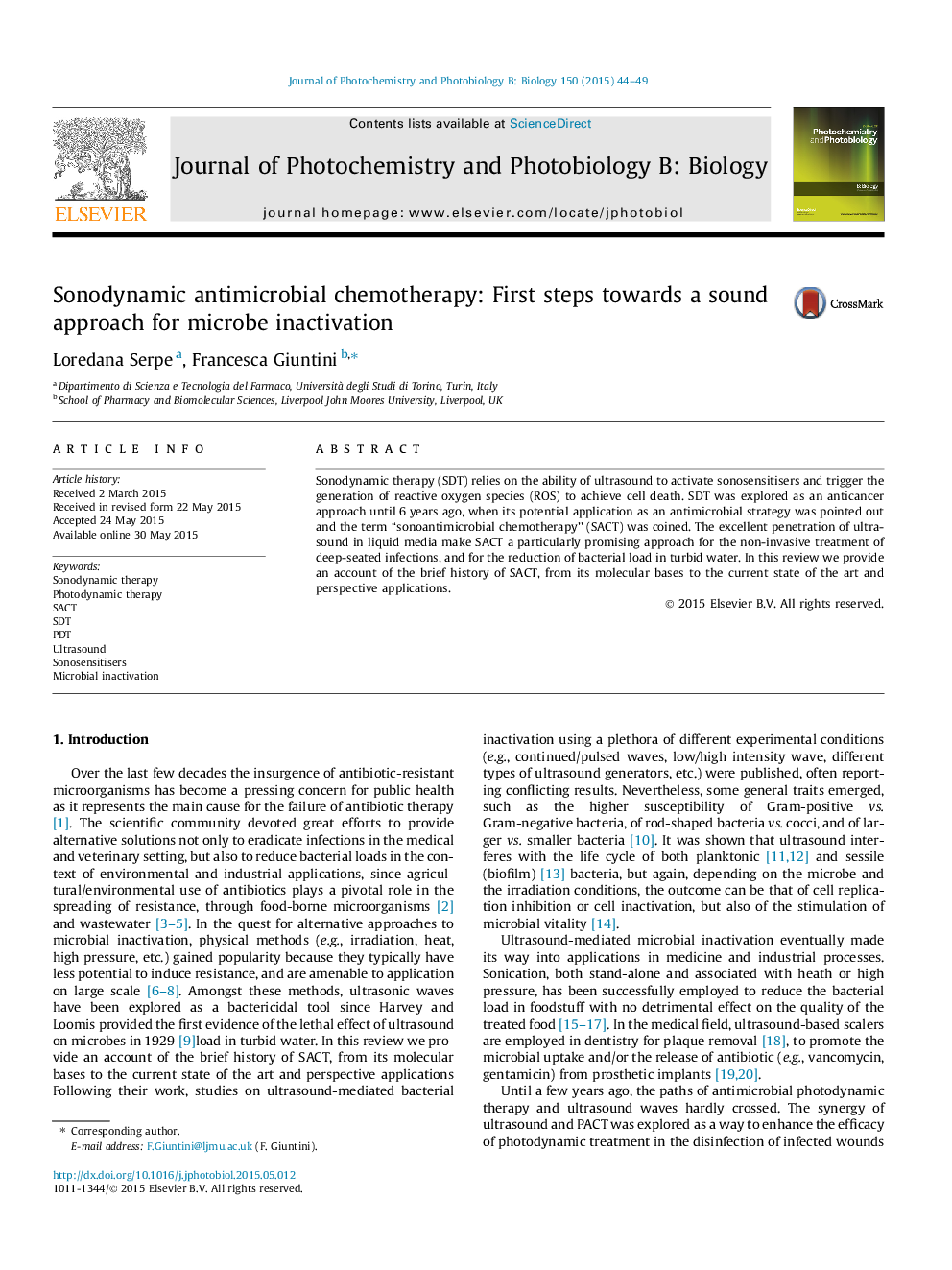| Article ID | Journal | Published Year | Pages | File Type |
|---|---|---|---|---|
| 30025 | Journal of Photochemistry and Photobiology B: Biology | 2015 | 6 Pages |
•Sonosensitised production of reactive oxygen species can inactivate bacteria.•Sonodynamic treatment is effective on Gram-positive and Gram-negative bacteria.•Sonodynamic approach has foreseeable medical and environmental applications.•Deeper understanding of SACT is needed to allow progresses in the field.
Sonodynamic therapy (SDT) relies on the ability of ultrasound to activate sonosensitisers and trigger the generation of reactive oxygen species (ROS) to achieve cell death. SDT was explored as an anticancer approach until 6 years ago, when its potential application as an antimicrobial strategy was pointed out and the term “sonoantimicrobial chemotherapy” (SACT) was coined. The excellent penetration of ultrasound in liquid media make SACT a particularly promising approach for the non-invasive treatment of deep-seated infections, and for the reduction of bacterial load in turbid water. In this review we provide an account of the brief history of SACT, from its molecular bases to the current state of the art and perspective applications.
Graphical abstractFigure optionsDownload full-size imageDownload as PowerPoint slide
